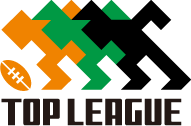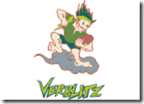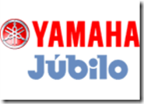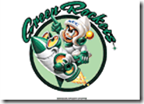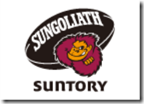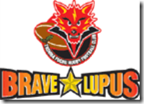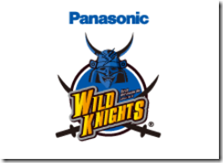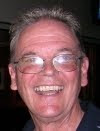Congratulations RIJ Newsletter 10th Anniversary 2003-2013
The 2013-14 season in Japan is about to begin. Ian has posted the second of his introductions to the season by systematically providing a preview.
Ian McDonnell lives and works in Japan. He can be contacted at ianmcdo@apost.plala.or.jp
CONTENTS
- Japan Rugby Top League 2013-14, Teams 5-8
Top League 2013-14:
Team Introductions 5-8
(5) Toyota Motor Corporation Verblitz
http://www.toyota.co.jp/
2013-14 Introduction: Last season (2012-13) Toyota rose to finish fifth on the final table. Improved consistency across the Top League season with nine wins, a draw and only three losses bodes well for the up-coming expanded competition but the ability to beat the top sides like Suntory and Panasonic will be crucial in deciding how far they go.
Former Japan and Toyota five-eighth Keiji Hirose is in his second year as head coach with hooker Ryuta Ueno retaining the captaincy responsibilities. Former All Blacks backrower Jerome Kaino is again in the squad this year and he will be charged with helping to put the grunt back in the Verblitz pack. Another New Zealander in the form of Stephen Brett has parted ways with the team and he has left big boots to fill in the playmaking position. Meanwhile, many of the big name Japan representatives in the squad such as backrower Takashi Kikutani, lock Toshizumi Kitagawa and wing Kosuke Endo will have to work hard this year.
Established: Toyota, one of the major corporate rugby identities in Japan, were not included in the inaugural Top League (TL) season of 2003-4. The club answered their critics the best way a great team can and that is by winning rugby games when they gained promotion to the top competition for 2004-5. Toyota finished fourth on the table in their first year in TL in 2004-5 and then backed that up by finishing fourth again the following two seasons in a row, before going one better to finish third in the 2007-8 season. In 2008-9, however, Toyota dropped to eighth on the Top League table but bounced back in 2009-10 to once again finish fourth, while in 2010-11 they finished third on the table.
Toyota Rugby was established during World War Two in August 1941, though it was not really until after the war in 1949 that rugby at Toyota really started to become better organised. They are based in the Toyota company heartland in the Toyota district near Nagoya in Aichi prefecture. Toyota Rugby are celebrating their 70th anniversary in 2011.
And the meaning of Verblitz? Verde is Italian for green, the colour of the team jersey, blitz is German for lightning. Raiga is the character used by the team as the God of Thunder.
The Company: Automobiles.
Titles:
Top League – none.
From the 2003-4 season to the 2005-6 season, Top League consisted of 12 teams and the team that finished on top of the table claimed the title. In the 2006-7 season, Top League was increased to 14 teams with the top four finishers on the ladder progressing to the Microsoft Cup, the play-off series to determine the overall Top League champion. From the 2009-10 season, the Microsoft company did not renew their naming rights sponsorship and so the finals series became known as the Top League Play-off Tournament.
2012-13 (14 teams): 5th on table on 43 points with 9 wins, a draw and 3 losses.
2011-12 (14 teams): 10th on table on 29 points with 5 wins and 8 losses.
2010-11 (14 teams): 3rd on table on 55 points with 11 wins and 2 losses. Lost to Sanyo 32-10 in Play-off semi-final.
2009-10 (14 teams): 4th on table on 48 points with 10 wins, a draw and 2 losses. Lost to Sanyo 25-21 in Play-off semi-final.
2008-9 (14 teams): 8th on table on 31 points with 6 wins and 7 losses.
2007-8 (14 teams): 3rd on table on 50 points with 9 wins, 3 losses and a draw. Lost to Suntory 33-10 in Microsoft Cup semi-final.
2006-7 (14 teams): 4th on table on 47 points with 9 wins & and losses. Lost to Toshiba 38-33 in Microsoft Cup semi-final.
2005-6 (12 teams): 4th on table on 37 points with 7 wins and 4 losses.
2004-5 (12 teams): 4th on table on 43 points with 8 wins and 3 losses.
2003-4 (12 teams): not included in the inaugural Top League season.
Microsoft Cup – (as a standalone Cup 2004-2006) none.
From 2004 to 2006 the Microsoft Cup was a separate knock-out tournament for the top 8 finishers in Top League. From 2007 the Microsoft Cup acted as the play-off finals series to determine the overall Top League champion with the top four finishers on the Top League ladder progressing to the Microsoft Cup. The Microsoft company did not renew their naming rights sponsorship for the 2009-10 Top League season and so the 2010 finals series became known as the Top League Play-off Tournament.
2009: DNQ.
2008: Lost to Suntory 33-10 in semi-finals.
2007: Lost to Toshiba 38-33 in semi-finals.
2006: Lost to NEC 17-12 in the first round.
2005: Beat Sanyo 41-21 in the first round and lost to Yamaha in the semi-finals on a toss of a coin after drawing 33-all.
2004: DNP.
National Championship – 3 times (1987, 1978 and 1969). Runners-up 6 times (2010, 2007, 2005, 2000, 1998 and 1986).
After 22 teams participated in the 2004 National Championship it was reduced to 8 teams for 2005 consisting of the top four Top League sides, the top two universities, the top challenger from lower divisions and the top club side. In 2009 the number of teams was increased to ten with two additional Top League sides.
For 2010 the Wildcard Tournament was introduced to the National Championship for the Top League sides that finished fifth to tenth on the final table. In 2011 these six sides were: Kobe (fifth on 36 points), NEC (sixth on 34 points), Ricoh (seventh on 32 points), Sanix (eighth on 32 points), Kintetsu (ninth on 31 points) and Coca-Cola (tenth on 28 points). The teams played off over two weekends with Kobe and Ricoh winning the right to participate in the NC as the final two Top League participants. In 2012 the Wildcard Tournament was abbreviated to the four teams that finished fifth to eighth with fifth placed Kintetsu Liners playing eighth placed Yamaha Jubilo and sixth placed Kobe Steelers playing seventh placed Ricoh Black Rams. Kobe beat Ricoh 32-19 and Yamaha beat Kintetsu 17-15 with the winners thus qualifying for the up-coming 49th National Championship.
2013 (50th NC - 10 teams): Qualified through Wildcard Tournament. Lost to Kobe 20-5 in first round.
2012 (49th NC - 10 teams): DNQ.
2011 (48th NC - 10 teams): Lost to Kobe 27-17 in first round.
2010 (47th NC - 10 teams): Runners-up. Beat Kobe 36-19 in first round, NTT 50-17 in quarterfinals, Toshiba 23-10 in semi-finals then lost to Sanyo 22-17 in final.
2009 (46th NC - 10 teams): DNQ .
2008 (45th NC - 8 teams): Beat Kintetsu 53-43 in the quarterfinals then lost to Sanyo 25-24 in semi-finals.
2007 (44th NC - 8 teams): Runners-up. Beat Kyuden 64-14 in the quarterfinals, beat Suntory 39-17 in the semi-finals then lost to Toshiba 19-10 in the final.
2006 (43rd NC - 8 teams): Lost to Waseda Uni 24-28 in the quarterfinals.
2005 (42nd NC - 8 teams): Runners-up. Beat Waseda 28-8 in quarterfinals, beat Toshiba 24-19 in the semi-finals then lost to NEC 17-13 in the final.
2004 (41st NC - 22 teams): Beat Kyuden 66-21 in third round, beat Sanyo 44-14 in fourth round then lost to eventual winners Toshiba 55-12 in quarterfinals.
Corporate Champions – 5 times (1999, 1987, 1986, 1978 and 1969); runners-up 10 times (2001, 1988, 1983, 1982, 1977, 1970, 1968, 1967, 1965 and 1951). The Corporate Championship started in 1949 and ended with the 55th Corporate Championship in 2003 as a consequence of the introduction of Top League as the national corporate league in the 2003-4 season.
(6) Yamaha Motor Co. Jubilo.
http://rugby.yamaha-motor.co.
2013-14 Introduction: Last season (2012-13) Yamaha finished sixth on the final Top League table, an improvement on results from recent seasons. Yamaha were a major force in the early years of Top League but have finished mid table for most years since. Yamaha were also one of a number of company teams in Japan significantly affected by the Lehman Brothers Shock and cut back on their commitment to rugby by not renewing professional contracts. This was reflected in an eleventh place finish in the 2010-11 season that forced the team to play through the promotion and relegation play-offs for the first time to retain their place in Top League.
However, Jubilo have been slowly rebuilding under Katsuyuki Kiyomiya as head coach and the confidence is coming back under his guidance. Another factor in the improved results has been the maturing of fullback Ayumu Goromaru as a player and a goal-kicker. Goromaru was the leading point scorer in 2011-12 and 2012-13 and his form virtually forced Eddie Jones to pick him as his first choice fullback and goal-kicker in the national side. The influence of both Kiyomiya and Goromaru cannot be under-estimated in the 2013-14 season. Yamaha have recruited a number of promising university players over the past few seasons and with an emphasis on youth the team is building for the future. Former All Black backrower Mose Tuiali’i and centre Male Sau are other important figures in the squad.
Established: Yamaha are relatively new on the corporate rugby scene in Japan having only been set up in 1984 and they are yet to win a major title. Yamaha are based in Iwata city, Shizuoka prefecture a few hours west of Tokyo.
Yamaha also support a more high profile soccer team with the same name of Jubilo with a lot of facilities, including the Iwata ground shared. The Jubilo part of the name comes from Spanish/Portuguese, meaning ‘jubilation’ and is intended to convey the meaning of bringing joy to the Yamaha fans and leaving a lasting impression of jubilation.
The Company: motor vehicles, in particular motorbikes. Furthermore, Yamaha is a major manufacturer of marine craft and products such as fishing and cruising boats, yachts, outboard motors, diesel motors for boats and jet skis.
Titles:
Top League – none; runners-up once (2004-5).
From the 2003-4 season to the 2005-6 season, Top League consisted of 12 teams and the team that finished on top of the table claimed the title. In the 2006-7 season, Top League was increased to 14 teams with the top four finishers on the ladder progressing to the Microsoft Cup, the play-off series to determine the overall Top League champion. From the 2009-10 season, the Microsoft company did not renew their naming rights sponsorship and so the finals series became known as the Top League Play-off Tournament.
2012-13 (14 teams): 6th on table on 42 points with 8 wins and 5 losses.
2011-12 (14 teams): 8th on table on 35 points with 6 wins, a draw and 6 losses.
2010-11 (14 teams): 11th on table on 27 points with 5 wins and 8 losses. Beat Kyuden 12-10 in P&R Play-off.
2009-10 (14 teams): 9th on table on 30 points with 5 wins, 2 draws and 6 losses.
2008-9 (14 teams): 7th on table on 35 points with 7 wins and 6 losses.
2007-8 (14 teams): 7th on table on 37 points with 7 wins and 6 losses.
2006-7 (14 teams): 3rd on table on 48 points with 10 wins, a draw and 2 losses.
2005-6 (12 teams): 7th on table on 28 points with 5 wins and 6 losses.
2004-5 (12 teams): Runners-up. 2nd on table on 45 points with 9 wins and 2 losses.
2003-4 (12 teams): 3rd on table on 39 points with 8 wins, 2 draws and 1 loss.
Microsoft Cup – (as a standalone Cup 2004-2006) none; runners-up once (2005).
From 2004 to 2006 the Microsoft Cup was a separate knock-out tournament for the top 8 finishers in Top League. From 2007 the Microsoft Cup acted as the play-off finals series to determine the overall Top League champion with the top four finishers on the Top League ladder progressing to the Microsoft Cup. The Microsoft company did not renew their naming rights sponsorship for the 2009-10 Top League season and so the 2010 finals series became known as the Top League Play-off Tournament.
2009: DNQ.
2008: DNQ.
2007: lost to Suntory 39-40 in SF.
2006: knocked out by Suntory 17-35 in first round.
2005: Runners-up. Beat Kubota 38-33 in first round. Beat Toyota in semi after match drawn 33-all at fulltime & both captains drew straws! Lost 20-6 to Toshiba in final.
2004: knocked out by Toshiba 39-10 in first round.
National Championship – none.
After 22 teams participated in the 2004 National Championship it was reduced to 8 teams for 2005 consisting of the top four Top League sides, the top two universities, the top challenger from lower divisions and the top club side. In 2009 the number of teams was increased to ten with two additional Top League sides.
For 2010 the Wildcard Tournament was introduced to the National Championship for the Top League sides that finished fifth to tenth on the final table. In 2011 these six sides were: Kobe (fifth on 36 points), NEC (sixth on 34 points), Ricoh (seventh on 32 points), Sanix (eighth on 32 points), Kintetsu (ninth on 31 points) and Coca-Cola (tenth on 28 points). The teams played off over two weekends with Kobe and Ricoh winning the right to participate in the NC as the final two Top League participants. In 2012 the Wildcard Tournament was abbreviated to the four teams that finished fifth to eighth with fifth placed Kintetsu Liners playing eighth placed Yamaha Jubilo and sixth placed Kobe Steelers playing seventh placed Ricoh Black Rams. Kobe beat Ricoh 32-19 and Yamaha beat Kintetsu 17-15 with the winners thus qualifying for the up-coming 49th National Championship.
For 2013, the Wildcard Tournament again featured six teams, that is, the six teams that finished fifth to tenth on the final Top League table for the 2012-13 season. In the first round, eighth placed NEC Green Rockets beat ninth placed NTT Communications Shining Arcs 38-14 and seventh placed Kintetsu Liners beat tenth placed Ricoh Black Rams 43-21. In the second round the following weekend, sixth placed Yamaha Jubilo beat Kintetsu 70-12 and fifth placed Toyota Verblitz beat NEC 41-23. The two winners from the second round in Yamaha and Toyota qualified for the National Championship as the Wildcard Qualifiers.
2013 (50th NC - 10 teams): Qualified through Wildcard Tournament. Lost to Panasonic 56-14 in first round.
2012 (49th NC - 10 teams): Beat Kintetsu 17-15 in Wildcard to qualify. Lost to Toshiba 56-15 in first round.
2011 (48th NC - 10 teams): DNQ.
2010 (47th NC - 10 teams): Lost to Coca-Cola 31-17 in Wildcard Tournament and thus DNQ.
2009 (46th NC - 10 teams): DNQ as only top 6 TL teams qualified.
2008 (45th NC - 8 teams): DNQ as only top 4 TL teams qualified.
2007 (44th NC - 8 teams): beat KGU 53-14 in round 2 and lost to Toshiba 47-10 in SF.
2006 (43rd NC - 8 teams): DNQ as only top 4 TL teams qualified.
2005 (42nd NC - 8 teams): qualified as second seed, but knocked out in SFs by eventual champions NEC 24-13.
2004 (41st NC - 22 teams): beat World 36-20 in quarters, but lost to eventual champions Toshiba in SFs 33-12.
Corporate Championship – none. The Corporate Championship started in 1949 and ended with the 55th Corporate Championship in 2003 as a consequence of the introduction of Top League as the national corporate league in the 2003-4 season.
(7) Kintetsu Liners
2013-14 Introduction: Last season (2012-13) Kintetsu finished seventh on the final Top League table.
Kintetsu are one of the oldest company clubs in Japanese rugby with a long and proud tradition and although the competition looks fierce this year the Liners will be hoping to go one better and make the play-offs for the first time in the 2013-14 season. In the forwards, former captain in lock Luke Thompson and backrower Toetu’u Taufa will be looking for big domestic seasons as they try to revive their Japan representative hopes. Meanwhile, in the backs a number of veteran players at the club such as goal-kicking playmaker Mr Dependable Yasumasa Shigemitsu who has consistently finished high on the point scorers lists over a number of years, midfield line breaker Jeffrey Ierome, former All Black Rico Gear and versatile fullback Tadanobu Ko all must step up again this year. Ryusuke Maeda will be in his third year as head coach and he will be looking to get the best out of this Osaka based squad.
Established: Kintetsu are one of the oldest company teams in Japan having been established in 1929.The full name for the club is Kintetsu Liners. The Liners refers to the nature of the company as a railway and transport concern in and around the Osaka area. The name ‘Liner’ comes from the name of a popular company express train known as the Urban Liner. In rugby terms, it is used to reflect the speed and power of Kintetsu rugby. Kintetsu are also the owner of the Kintetsu Hanazono Rugby Ground in Osaka, one of the two main rugby grounds in Japan. (The other is the Prince Chichibu Memorial Rugby Ground in Tokyo). Hanazono too was established in 1929 and so both Kintetsu rugby and the Hanazono ground celebrated 80 years in 2009.
The Company: The Kintetsu Corporation has a railway network in western Japan that covers Osaka, Kyoto, Nara, Yoshino, Ise-shima and Nagoya. Have a look at www.kintetsu.co.jp
Titles:
Top League – none.
From the 2003-4 season to the 2005-6 season, Top League consisted of 12 teams and the team that finished on top of the table claimed the title. In the 2006-7 season, Top League was increased to 14 teams with the top four finishers on the ladder progressing to the Microsoft Cup, the play-off series to determine the overall Top League champion. From the 2009-10 season, the Microsoft company did not renew their naming rights sponsorship and so the finals series became known as the Top League Play-off Tournament.
2012-13 (14 teams): 7th on table on 33 points with 6 wins and 7 losses.
2011-12 (14 teams): 5th on table on 39 points with 8 wins and 5 losses.
2010-11 (14 teams): 9th on table on 31 points with 6 wins and 7 losses.
2009-10 (14 teams): 11th on table on 23 points with 4 wins, a draw and 8 losses.
2008-9 (14 teams): 9th on table on 28 points with 5 wins and 8 losses.
2007-8: DNP. Played in Top West competition.
2006-7: DNP. Played in Top West competition.
2005-6: DNP. Played in Top West competition.
2004-5 (12 teams): 11th on table on 18 points with 2 wins and 9 losses. (Automatically relegated)
2003-4 (12 teams): 10th on table on 18 points with 3 wins and 8 losses.
Microsoft Cup – (as a standalone Cup 2004-2006) none.
From 2004 to 2006 the Microsoft Cup was a separate knock-out tournament for the top 8 finishers in Top League. From 2007 the Microsoft Cup acted as the play-off finals series to determine the overall Top League champion with the top four finishers on the Top League ladder progressing to the Microsoft Cup. The Microsoft company did not renew their naming rights sponsorship for the 2009-10 Top League season and so the 2010 finals series became known as the Top League Play-off Tournament.
2009: DNQ as only top 4 Top League teams qualified.
2008: DNP. Played in Top West competition.
2007: DNP. Played in Top West competition.
2006: DNP. Played in Top West competition.
2005: DNQ as only top 8 Top League teams qualified.
2004: DNQ as only top 8 Top League teams qualified. .
National Championship – 3 times (1975, 1968 and 1967); runners-up once (1964).
After 22 teams participated in the 2004 National Championship it was reduced to 8 teams for 2005 consisting of the top four Top League sides, the top two universities, the top challenger from lower divisions and the top club side. In 2009 the number of teams was increased to ten with two additional Top League sides.
For 2010 the Wildcard Tournament was introduced to the National Championship for the Top League sides that finished fifth to tenth on the final table. In 2011 these six sides were: Kobe (fifth on 36 points), NEC (sixth on 34 points), Ricoh (seventh on 32 points), Sanix (eighth on 32 points), Kintetsu (ninth on 31 points) and Coca-Cola (tenth on 28 points). The teams played off over two weekends with Kobe and Ricoh winning the right to participate in the NC as the final two Top League participants. In 2012 the Wildcard Tournament was abbreviated to the four teams that finished fifth to eighth with fifth placed Kintetsu Liners playing eighth placed Yamaha Jubilo and sixth placed Kobe Steelers playing seventh placed Ricoh Black Rams. Kobe beat Ricoh 32-19 and Yamaha beat Kintetsu 17-15 with the winners thus qualifying for the up-coming 49th National Championship.
For 2013, the Wildcard Tournament again featured six teams, that is, the six teams that finished fifth to tenth on the final Top League table for the 2012-13 season. In the first round, eighth placed NEC Green Rockets beat ninth placed NTT Communications Shining Arcs 38-14 and seventh placed Kintetsu Liners beat tenth placed Ricoh Black Rams 43-21. In the second round the following weekend, sixth placed Yamaha Jubilo beat Kintetsu 70-12 and fifth placed Toyota Verblitz beat NEC 41-23. The two winners from the second round in Yamaha and Toyota qualified for the National Championship as the Wildcard Qualifiers.
2013 (50th NC - 10 teams): DNQ.
2012 (49th NC - 10 teams): Lost to Yamaha 17-15 in Wildcard Tournament and thus DNQ.
2011 (48th NC - 10 teams): Lost to Sanix 30-22 in Wildcard Tournament and thus DNQ.
2010 (47th NC - 10 teams): DNQ.
2009 (46th NC - 10 teams): DNQ as only top 6 TL teams qualified.
2008 (45th NC - 8 teams): Qualified as Top Challenger. Defeated Keio University 45-14 before losing to Toyota 53-43.
2007 (44th NC - 8 teams): DNP.
2006 (43rd NC - 8 teams): DNP.
2005 (42nd NC - 8 teams): DNQ as only top 4 TL teams qualified.
2004 (41st NC - 22 teams): DNQ as only top 8 TL teams qualified.
Corporate Championship – 8 times (1975, 1970, 1968, 1967, 1962, 1958, 1957 and 1954); runners-up 9 times (1974, 1966, 1964, 1961, 1960, 1959, 1956, 1952 and 1949). The Corporate Championship started in 1949 and ended with the 55th Corporate Championship in 2003 as a consequence of the introduction of Top League as the national corporate league in the 2003-4 season.
(8) NEC Green Rockets
2013-14 Introduction: Last season (2012-13) NEC finished eighth on the final Top League table, dropping from fourth from the previous season.
A lot of the success at NEC in the past few seasons could be put down to one man: giant Fijian winger Nemani Nadolo. The larger than life Fijian international at 195cm and 129kg won the leading try scorer title in Top League two seasons back and he should again prove to be almost impossible to stop again this year. Nevertheless, NEC are far from a one man show and the club is gradually rebuilding with a lot of young talent coming through after some lean years over recent times. One of the up and coming stars is five-eighth Yu Tamura and his potential has not gone unnoticed either as he has gone on to national honours under Eddie Jones. Other rising players include flanker Tsuyoshi Murata and No8 Makoto Tosa. Other established players at NEC include Ryota Asano and Nili Latu in the forwards and Anthony Tuitavake and wing Koichiro Kubota in the backs. Finally, former Japan fullback Shaun Webb joins the Rockets from Coca-Cola this season.
Established: NEC (Nippon Denki Kabushiki geisha) are another of the relatively newer clubs in Top League having only been established in 1985 with the team based in the NEC factory complex in Abiko city in north-western Chiba prefecture. The green in Green Rockets refers to the grass of the playing fields upon which NEC battles. While the rocket is the image of a fast and powerful NEC leading the way in the 21st century. NEC also have in their sports stable the Blue Rockets (men’s volleyball team) and the Red Rockets (women’s volleyball team).
In 2011-12 NEC finished fourth on the table and qualified for the play-offs for the first time. In 2010-11 NEC finished sixth on the final Top League table after they slumped to tenth in 2009-10. NEC had relatively disappointing 2008-9, 2007-8 and 2006-7 seasons by their standards finishing fifth, sixth and seventh on the table respectively. However, apart from these seasons, the club has been very successful over recent years.
The Company: The company itself was founded in 1899 and was known in English as Nippon Electric Company, Limited until it was re-branded as NEC Corporation in 1983. NEC is an electrical, electronics and IT company. See www.nec.co.jp.
Titles:
Top League – none.
From the 2003-4 season to the 2005-6 season, Top League consisted of 12 teams and the team that finished on top of the table claimed the title. In the 2006-7 season, Top League was increased to 14 teams with the top four finishers on the ladder progressing to the Microsoft Cup, the play-off series to determine the overall Top League champion. From the 2009-10 season, the Microsoft company did not renew their naming rights sponsorship and so the finals series became known as the Top League Play-off Tournament.
2012-13 (14 teams): 8th on table on 32 points with 6 wins and 7 losses.
2011-12 (14 teams): 4th on table on 41 points with 8 wins and 5 losses. Lost to Suntory 56-8 in play-off semi-finals.
2010-11 (14 teams): 6th on table on 34 points with 7 wins and 6 losses.
2009-10 (14 teams): 10th on table on 25 points with 4 wins and 9 losses.
2008-9 (14 teams): 5th on table on 37 points with 8 wins and 5 losses.
2007-8 (14 teams): 6th on table on 42 points with 9 wins and 4 losses.
2006-7 (14 teams): 7th on table on 38 points with 7 wins and 6 losses.
2005-6 (12 teams): 3rd on table on 41 points with 9 wins and 2 losses.
2004-5 (12 teams): 3rd on table on 44 points with 9 wins and 2 losses.
2003-4 (12 teams): 6th on table on 27 points with 5 wins, 2 draws and 4 losses.
Microsoft Cup – (as a standalone Cup 2004-2006) once (2004).
From 2004 to 2006 the Microsoft Cup was a separate knock-out tournament for the top 8 finishers in Top League. From 2007 the Microsoft Cup acted as the play-off finals series to determine the overall Top League champion with the top four finishers on the Top League ladder progressing to the Microsoft Cup. The Microsoft company did not renew their naming rights sponsorship for the 2009-10 Top League season and so the 2010 finals series became known as the Top League Play-off Tournament.
2009: DNQ.
2008: DNQ.
2007: DNQ.
2006: beat Toyota 17-12 in first round & knocked out by Toshiba 23-10 in semi-finals.
2005: knocked out by Kobe 51-16 in first round.
2004: Champions. Defeated Kobe 34-10 in SF, Suntory 32-5 in QF and Toshiba 24-19 in final.
National Championship –3 times (2006 (joint champions with Toshiba after final drawn at 6-all), 2005 and 2002).
After 22 teams participated in the 2004 National Championship it was reduced to 8 teams for 2005 consisting of the top four Top League sides, the top two universities, the top challenger from lower divisions and the top club side. In 2009 the number of teams was increased to ten with two additional Top League sides.
For 2010 the Wildcard Tournament was introduced to the National Championship for the Top League sides that finished fifth to tenth on the final table. In 2011 these six sides were: Kobe (fifth on 36 points), NEC (sixth on 34 points), Ricoh (seventh on 32 points), Sanix (eighth on 32 points), Kintetsu (ninth on 31 points) and Coca-Cola (tenth on 28 points). The teams played off over two weekends with Kobe and Ricoh winning the right to participate in the NC as the final two Top League participants. In 2012 the Wildcard Tournament was abbreviated to the four teams that finished fifth to eighth with fifth placed Kintetsu Liners playing eighth placed Yamaha Jubilo and sixth placed Kobe Steelers playing seventh placed Ricoh Black Rams. Kobe beat Ricoh 32-19 and Yamaha beat Kintetsu 17-15 with the winners thus qualifying for the up-coming 49th National Championship.
For 2013, the Wildcard Tournament again featured six teams, that is, the six teams that finished fifth to tenth on the final Top League table for the 2012-13 season. In the first round, eighth placed NEC Green Rockets beat ninth placed NTT Communications Shining Arcs 38-14 and seventh placed Kintetsu Liners beat tenth placed Ricoh Black Rams 43-21. In the second round the following weekend, sixth placed Yamaha Jubilo beat Kintetsu 70-12 and fifth placed Toyota Verblitz beat NEC 41-23. The two winners from the second round in Yamaha and Toyota qualified for the National Championship as the Wildcard Qualifiers.
2013 (50th NC - 10 teams): DNQ.
2012 (49th NC - 10 teams): Beat Kobe 17-10 in 1st round, Canon 62-19 in 2nd round and lost to Panasonic 41-3 in semi-finals.
2011 (48th NC - 10 teams): Beat Ricoh 38-33 in Wildcard Tournament to qualify. Lost to Toshiba 21-10 in first round.
2010 (47th NC - 10 teams): Beat Sanix 33-5 and Kubota 22-21 in Wildcard Tournament to qualify for NC. Drew with Suntory 10-all in first round but won on lottery ballot, beat Teikyo Uni. 38-5 in QFs then lost to Sanyo 25-16 in SFs.
2009 (46th NC - 10 teams): Beat Kobe 30-29 in first round, then lost to Ricoh 24-23 in second round.
2008 (45th NC - 8 teams): DNQ as only top 4 TL teams qualified.
2007 (44th NC - 8 teams): DNQ as only top 4 TL teams qualified.
2006 (43rd NC - 8 teams): Joint Champions. Beat Coca-Cola 69-24 in QFs & Sanyo 24-16 in SFs. Drew the final 6-all with Toshiba.
2005 (42nd NC - 8 teams): Champions. Beat Yamaha 24-13 in SFs, Sanix 55-21 in QFs & Toyota 17-13 in final.
2004 (41st NC - 22 teams): Beat KGU 43-13, Suntory 34-27 in QFs & lost 34-29 to Kobe in SFs.
Corporate Championship – none. The Corporate Championship started in 1949 and ended with the 55th Corporate Championship in 2003 as a consequence of the introduction of Top League as the national corporate league in the 2003-4 season.

